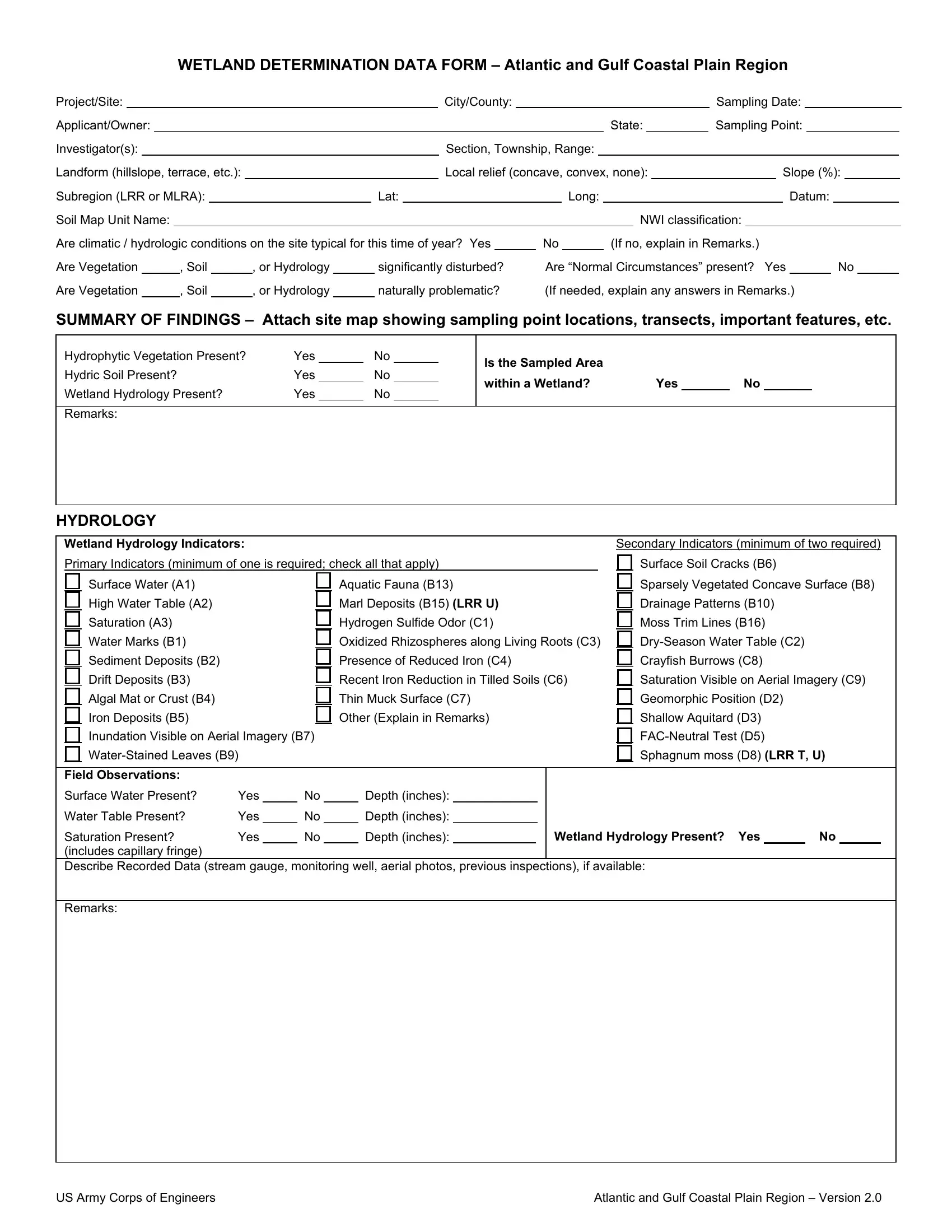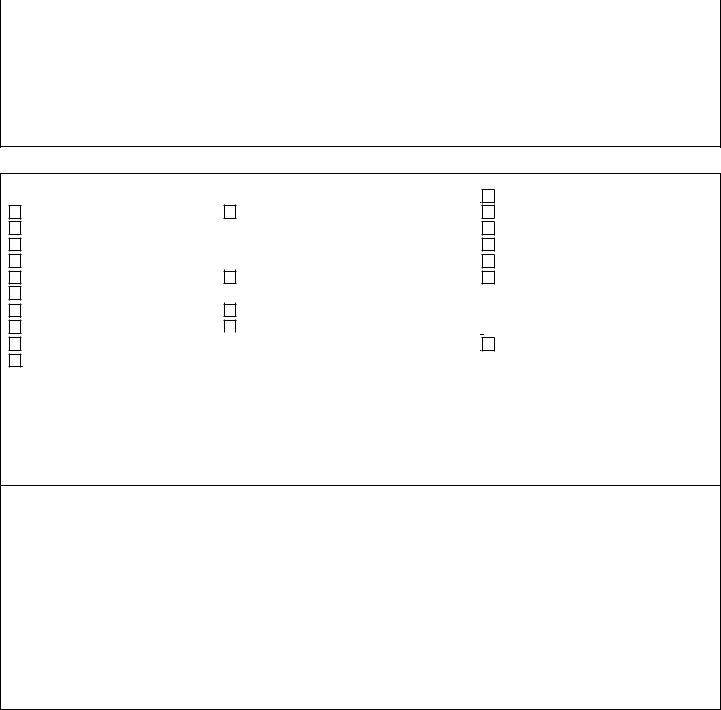You could fill in 150A easily by using our PDFinity® editor. In order to make our tool better and less complicated to utilize, we constantly design new features, with our users' suggestions in mind. Starting is effortless! Everything you need to do is adhere to the next simple steps below:
Step 1: Firstly, access the tool by pressing the "Get Form Button" in the top section of this webpage.
Step 2: With the help of our advanced PDF editing tool, you're able to accomplish more than merely complete forms. Edit away and make your docs seem perfect with customized text added, or adjust the file's original content to perfection - all that accompanied by the capability to incorporate any pictures and sign the file off.
To be able to complete this document, ensure that you enter the information you need in each and every blank:
1. While submitting the 150A, be certain to incorporate all important fields within the relevant form section. This will help to facilitate the process, allowing your information to be processed swiftly and appropriately.
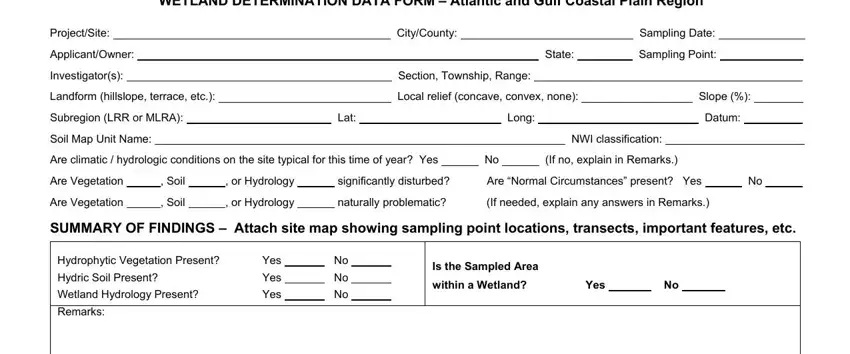
2. Now that the last segment is finished, it is time to add the needed specifics in Wetland Hydrology Indicators, Secondary Indicators minimum of, Primary Indicators minimum of one, Surface Water A, Aquatic Fauna B, Sparsely Vegetated Concave Surface, High Water Table A, Marl Deposits B LRR U, Hydrogen Sulfide Odor C, Drainage Patterns B, Moss Trim Lines B, Saturation A, Water Marks B, Oxidized Rhizospheres along Living, and DrySeason Water Table C in order to move forward further.
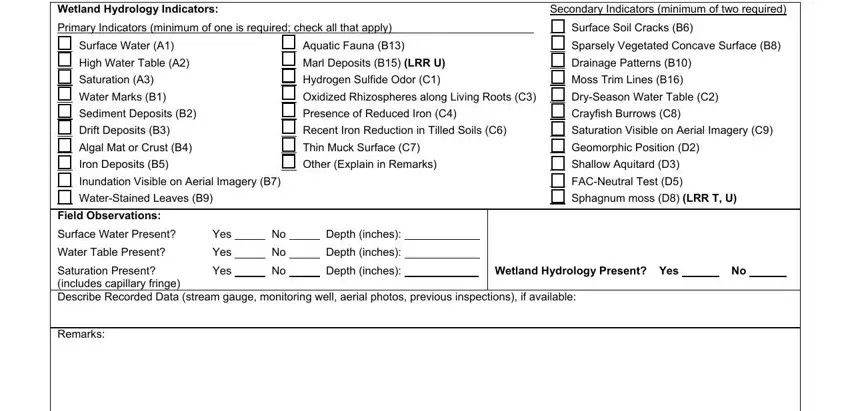
3. Throughout this part, have a look at VEGETATION Four Strata Use, Sampling Point, Absolute Dominant Indicator Tree, Total Cover, of total cover of total cover, SaplingShrub Stratum Plot size, Total Cover, of total cover of total cover, Herb Stratum Plot size, Dominance Test worksheet, Number of Dominant Species That, Prevalence Index worksheet, Total Cover of Multiply by, OBL species, and FACW species x. Each of these should be filled out with greatest attention to detail.
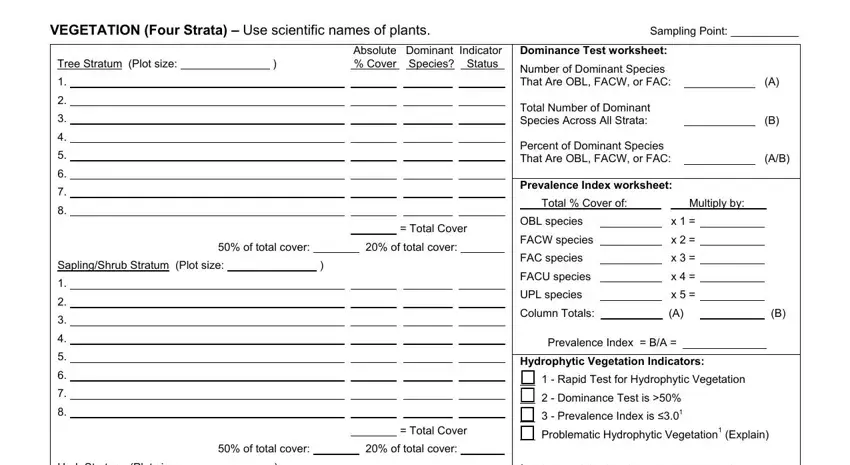
Be extremely attentive while filling out OBL species and of total cover of total cover, since this is where a lot of people make some mistakes.
4. This next section requires some additional information. Ensure you complete all the necessary fields - Herb Stratum Plot size, Total Cover, of total cover of total cover, Woody Vine Stratum Plot size, Total Cover, of total cover of total cover, Remarks If observed list, Indicators of hydric soil and, Definitions of Four Vegetation, and Hydrophytic Vegetation Present Yes - to proceed further in your process!
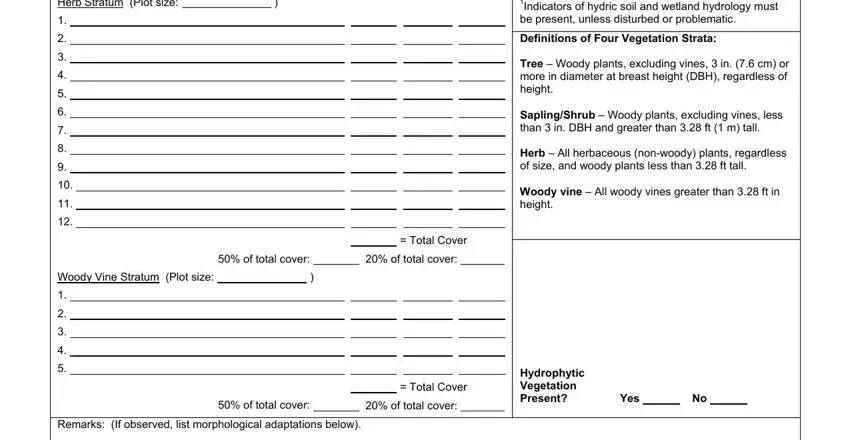
5. When you draw near to the conclusion of the file, you'll find several extra requirements that should be fulfilled. In particular, SOIL, Sampling Point, Profile Description Describe to, Depth inches, Matrix Redox Features Color moist, Type CConcentration DDepletion, Indicators for Problematic Hydric, Polyvalue Below Surface S LRR S T, cm Muck A LRR O cm Muck A LRR S, Histosol A Histic Epipedon A Black, and wetland hydrology must be present should be filled out.
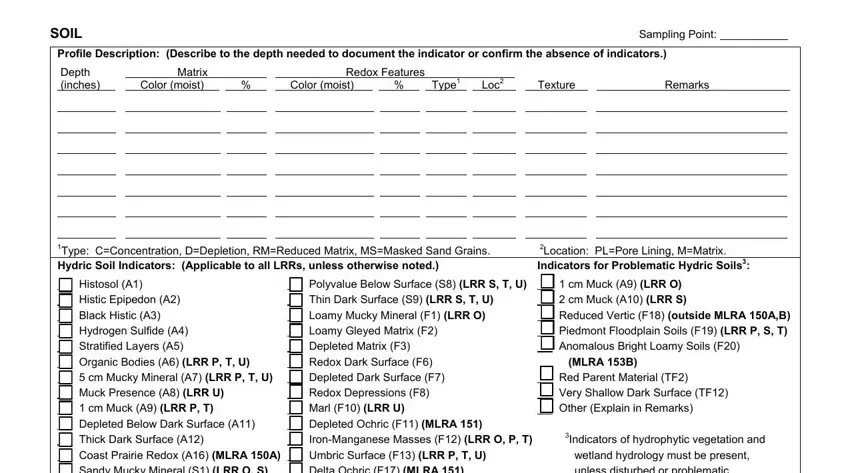
Step 3: Ensure that your details are right and then click on "Done" to finish the process. Sign up with FormsPal now and immediately get access to 150A, all set for downloading. Every last change you make is handily saved , enabling you to change the file at a later stage when necessary. FormsPal is dedicated to the personal privacy of all our users; we make sure that all information used in our tool stays secure.
